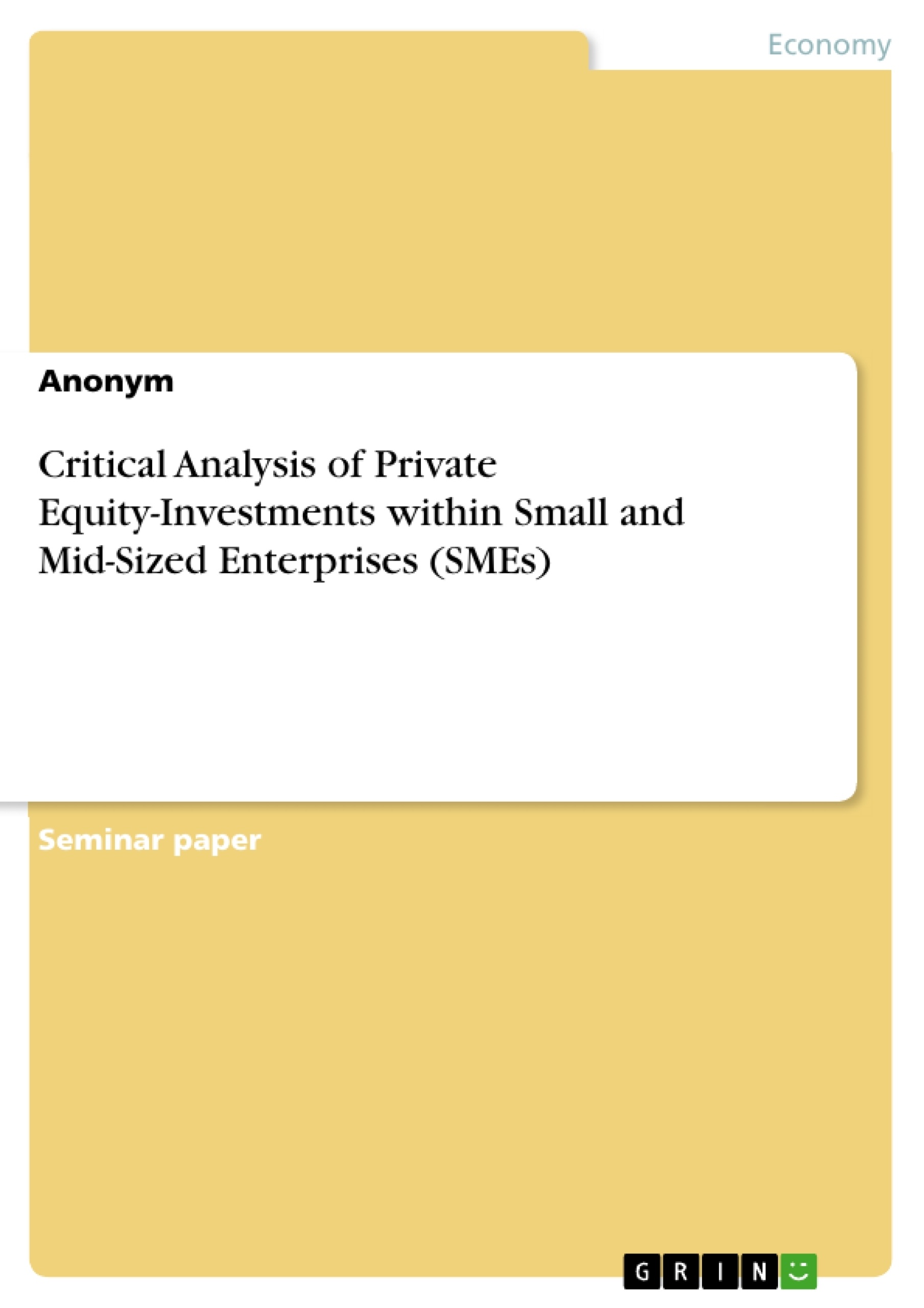This work focuses on the private equity (PE) investments within SMEs. Fundamentals of private equity investments are reviewed in the second chapter. This includes definition and product categories of private equity and how PE business is organized as well as the history of PE market in Germany. The third chapter analyses the process of the PE deals including the different phases as well as the exit strategies. The last chapter critically analyse the PE deals from the point of view of the investor and the targeted company before closing with the outlook and conclusion.
In the last decades, the private equity market in Germany has witnessed waves of rise and fall. But it surpassed, by the end of 2017, all the records of German PE history. According to Deutsche Beteiligungs (DBAG), the amount of transactions in the mid-sized businesses in the German market dramatically increased and hit €4.4 billion in 2017 which was the highest during the last 15 years.
But in contrast, the competition in the German market has been recently high with a steady number of companies which led to high prices and overvalued companies. PE firms target the mid-sized businesses since they are more likely to accept financial investors than bank loans or credit lines. However, this problem can now be countered with the help of PE in the context of alternative corporate financing.
It should be noted that PE business has been a concern of German politics and businesses since the 1960s where the financial system was basically based on banks which is not appropriate for the development of PE industry. The government intervention was the base to build a stronger PE industry away from bank-based financial systems. Recently, the stock market segment was a key driver for the dynamic development of PE market. The price falls and the collapse of the overheated and overvalued companies were also clearly felt in the PE segment and generated a great deal over scepticism on the capital markets.
Inhaltsverzeichnis (Table of Contents)
- Introduction
- Problem and Objective
- Scope of Work
- Fundamentals of Private Equity investments
- Definition and Product Categories of Private Equity
- The Structure of Private Equity Business
- The Origin and History of Private Equity Market in Germany
- Process of Private Equity Investments and Negotiation Criteria
- Planning Phase
- Due Diligence
- Final negotiation and Sales Contract
- Exit Strategies
- Trade Sale
- Secondary Sale
- Buy back
- Initial Public Offering (IPO)
- Risks and Opportunities of Private Equity Investment
- Critical Analysis from the Company´s Point of View
- Critical Analysis from the Investor´s Point of View
- Outlook and Conclusion
Zielsetzung und Themenschwerpunkte (Objectives and Key Themes)
This work aims to provide a critical analysis of private equity investments within small and medium-sized enterprises (SMEs) in Germany. It explores the fundamental aspects of private equity, including its definition, product categories, and organizational structure. Furthermore, the analysis delves into the process of private equity deals, encompassing planning, due diligence, negotiation, and exit strategies.
- The historical development of the private equity market in Germany
- The various phases of private equity investment processes
- The different exit strategies available for private equity investors
- The risks and opportunities of private equity investments for both companies and investors
- The impact of private equity investments on SMEs in the German economy
Zusammenfassung der Kapitel (Chapter Summaries)
The introduction sets the stage for the analysis by defining the problem and objective of the study. It highlights the recent growth of the private equity market in Germany and the increasing competition among investors. The second chapter delves into the fundamentals of private equity, providing a definition, overview of product categories, and an explanation of the typical business structure. It also traces the historical development of the private equity market in Germany.
Chapter three examines the process of private equity investments, focusing on the planning phase, due diligence process, and the final negotiation and sales contract. This chapter explores key factors considered by both companies and investors during each phase, including the valuation process, negotiation criteria, and contractual aspects.
The fourth chapter discusses the exit strategies available to private equity investors. It analyzes the different options, including trade sale, secondary sale, buyback, and initial public offering (IPO), outlining the advantages and disadvantages of each strategy.
Schlüsselwörter (Keywords)
The main keywords and focus topics of this text include private equity, venture capital, small- and mid-sized enterprises (SMEs), investment process, due diligence, exit strategies, trade sale, secondary sale, buyback, initial public offering (IPO), risks, opportunities, and the German economy.
- Quote paper
- Anonym (Author), 2018, Critical Analysis of Private Equity-Investments within Small and Mid-Sized Enterprises (SMEs), Munich, GRIN Verlag, https://www.grin.com/document/516599



